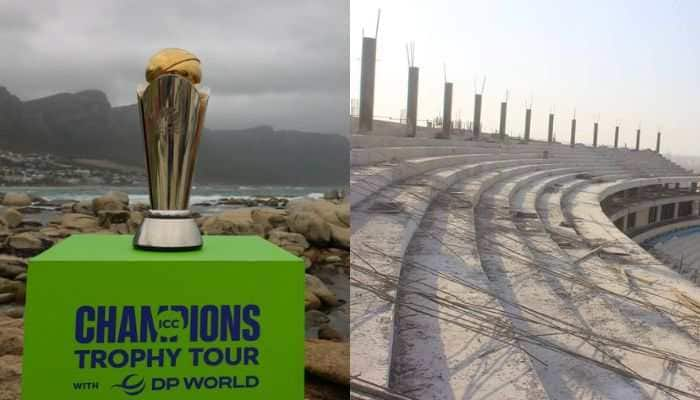Milky Way`s 84 million stars catalogued
An international team of astronomers has created a nine-gigapixel zoomable image of 84 million stars, using the UK-built VISTA infrared survey telescope at ESO’s Paranal Observatory.
Trending Photos
)
Washington: An international team of astronomers has created a nine-gigapixel zoomable image of 84 million stars, using the UK-built VISTA infrared survey telescope at ESO’s Paranal Observatory.
The image is so large that, if printed with the resolution of the average book, it would be nine meters long and seven meters tall. The huge dataset contains ten times more stars than previous studies and is a major step forward for the understanding of our home galaxy, the Milky Way.
“This gigantic image is an impressive testament to the quality of the images being taken at the VISTA telescope which UK astronomers and engineers conceived, designed and built for delivery to its home at the European Southern Observatory site in Chile’s Atacama desert,” said Jim Emerson from Queen Mary, University of London, which leads the VISTA consortium.
“The unprecedented detail on numbers, types, and locations of stars towards the centre of our galaxy is giving us exciting new tools to test competing models for how our galaxy is really structured and came to be as it is”, he added.
Queen Mary is one of two UK institutions named on the paper. The other is the University of Hertfordshire.
Most spiral galaxies, including our home galaxy, the Milky Way, have a large concentration of ancient stars surrounding the centre, that astronomers call the bulge.
Understanding the formation and evolution of the Milky Way’s bulge is vital for understanding the galaxy as a whole.
“By observing in detail the myriads of stars surrounding the centre of the Milky Way we can learn a lot more about the formation and evolution of not only our galaxy, but also spiral galaxies in general,” explained lead author of the study, Roberto Saito (Pontificia Universidad Catolica de Chile, Universidad de Valparaíso and The Milky Way Millennium Nucleus, Chile).
However, as Dante Minniti, co-author of the study said, obtaining detailed observations of this region is not an easy task: “Observations of the bulge of the Milky Way are very hard because it is obscured by dust. To peer into the heart of the galaxy, we need to observe in infrared light, which is less affected by the dust.”
The large mirror, wide field of view and very sensitive infrared detectors of VISTA make it by far the best tool for this job. VISTA was designed by STFC’s UK Astronomy Technology Center (UK ATC) who also Project Managed the manufacture and assembly of the facility.
The team of astronomers is using data from one of six public surveys carried out with VISTA, the VISTA Variables in the Via Lactea program (VVV), The data has been used to create a monumental 108 200 by 81 500 pixel colour image containing nearly nine billion pixels, one of the biggest astronomical images ever produced.
The processing of VISTA’s raw images into the astronomically useful calibrated images, which were then used to construct this image, was carried out at the Cambridge Astronomical Survey Unit, a part of the UK’s VISTA Data Flow System.
“Sometimes in astronomy there are moments when you simply think, wow! This is one of those times. The detail unveiled through the scale of the image and the technical excellence by the teams who helped achieve this is incredible. It really will allow us to push the boundaries of what we know about our home galaxy,” said Professor Richard Holdaway, Director, STFC’s RAL Space where the camera was built.
ANI
Stay informed on all the latest news, real-time breaking news updates, and follow all the important headlines in india news and world News on Zee News.
Advertisement
Live Tv
Advertisement







)
)
)
)
)
)
)
)
)
)
